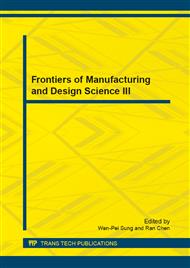p.476
p.483
p.488
p.493
p.498
p.504
p.509
p.515
p.519
Springback Prediction and Compensation for Thick Freeform Surface Parts Forming
Abstract:
The springback phenomenon of thick freeform surface steel plate forming occurs consequentially after unloading, which reduces the accuracy of the parts manufacturing and the processing efficiency. This paper developed a numerical simulation solution to the springback of thick freeform surface parts forming process using PAM-STAMP 2G at 20°C, 200°C, 400°C, 600°C, 700°C and 800°C, respectively. The maximum springback value of freeform surface parts decreases with increasing temperature, at 600°C, the minimum extreme value, and then the value with increasing temperature continues to rise higher. PAM-STAMP 2G offers a Die Compensation module, which is used to modify the die surface of thick freeform surface steel plate forming focused on springback defects. The approach based on iteratively comparing a target part shape with a numerical simulated part shape following forming and springback can be effective in reducing springback error. With it, the new tooling shapes will ensure the geometric accuracy of the thick freeform surface parts.
Info:
Periodical:
Pages:
498-503
Citation:
Online since:
December 2012
Authors:
Price:
Сopyright:
© 2013 Trans Tech Publications Ltd. All Rights Reserved
Share:
Citation:


